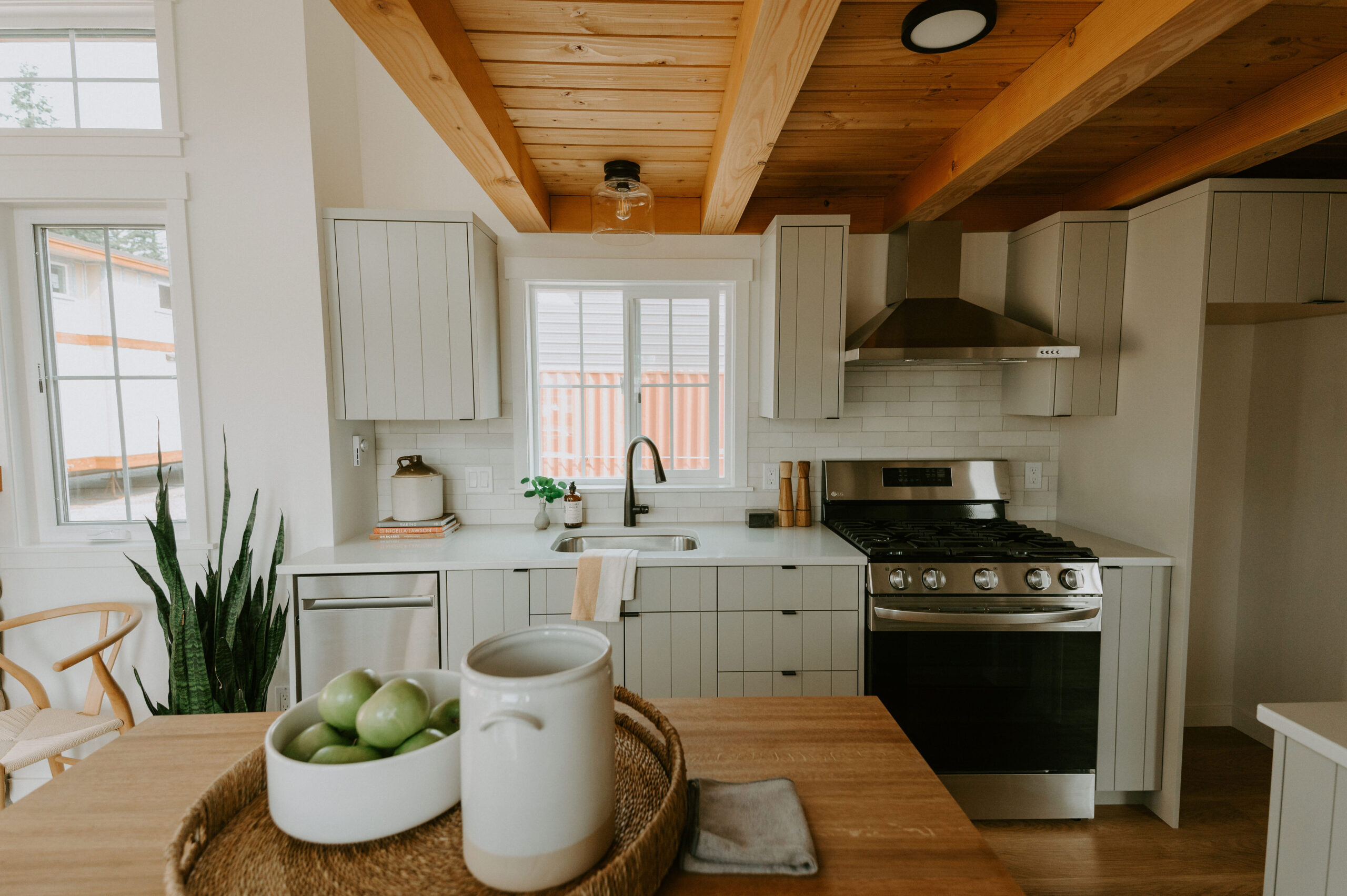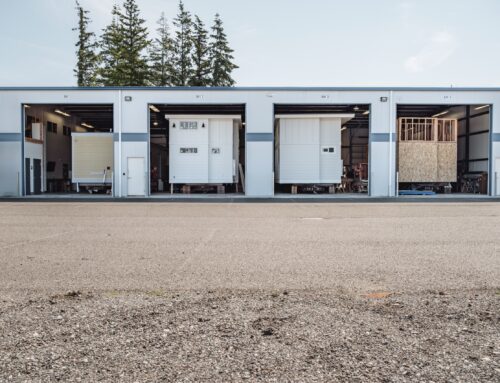Designing a kitchen in a tiny home is all about maximizing every inch of space while creating a functional, efficient, and stylish environment. With limited square footage, every design decision, from layout, to finishes, to storage, must be carefully planned. Whether you’re downsizing to embrace minimalist living or creating a cozy retreat, there are several key considerations to keep in mind. In this blog, we’ll explore five essential factors to consider when designing your tiny home kitchen, ensuring it’s not only practical but also a comfortable and sustainable space to cook, eat, and gather.
#1 Lighting & Ventilation
Proper lighting and ventilation are essential in a tiny home kitchen to create a bright, airy atmosphere and prevent moisture buildup and odors.
#2 Space Efficiency & Layout
An efficient layout and smart use of space are key to maximizing functionality and flow in the kitchen, ensuring you have everything you need without overcrowding the area.
#3 Durability & Materials
Choosing durable, easy-to-maintain, and moisture-resistant materials ensures the longevity of your kitchen while minimizing the need for frequent repairs in a high-use, limited-space environment.
#4 Multi-Functional Appliances
Multi-functional and compact appliances save valuable counter and storage space, offering versatility for cooking while keeping your kitchen efficient and organized.
#5 Clever Storage
Innovative storage solutions, such as pull-out drawers, wall-mounted racks, and hidden compartments, help maximize available space and keep your kitchen tidy, organized, and accessible.
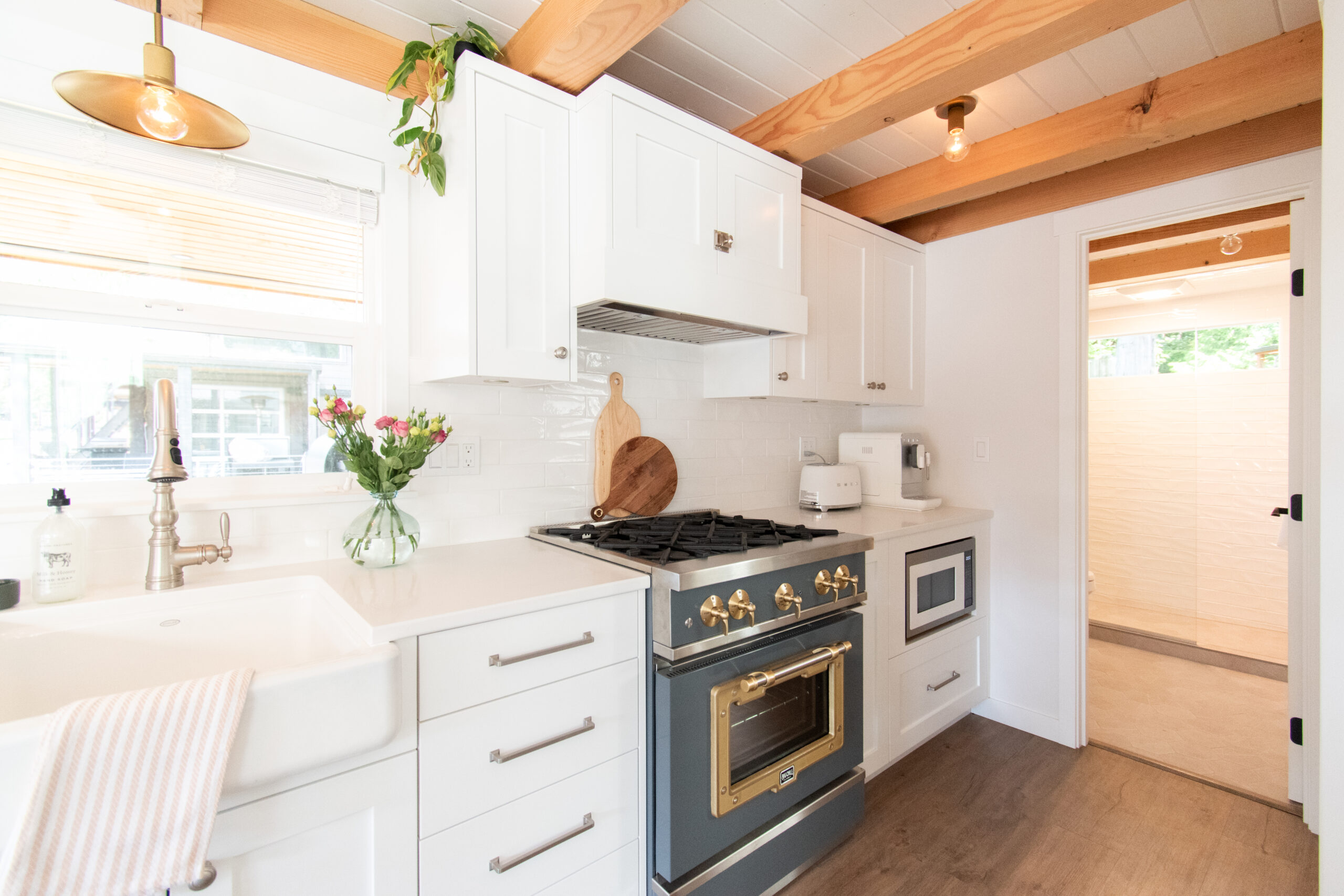
#1 Lighting and Ventilation
Lighting and ventilation are essential for creating a functional and inviting tiny home kitchen. Maximizing natural light through windows or skylights can instantly open up the space, making it feel larger and airier. A bright, sunlit kitchen is not only visually appealing but also feels more spacious, which is crucial in a compact area.
But it’s not just about natural light—task lighting is equally important. Without the right lighting over your countertops, stove, and sink, cooking can feel like a chore rather than a pleasure. Under-cabinet LEDs, pendant lights, or LED strips can illuminate these work zones, ensuring you can see clearly while adding a modern touch to your kitchen.
And let’s not forget ventilation, which is important in a small space where cooking can quickly fill the air with heat and odors. A well-placed range hood or exhaust fan will help clear out steam, smoke, and cooking smells, keeping the space fresh.
By combining natural light, task lighting, and effective ventilation, you’ll create a kitchen that feels larger, is easier to work in, and remains comfortable even during your busiest cooking sessions.
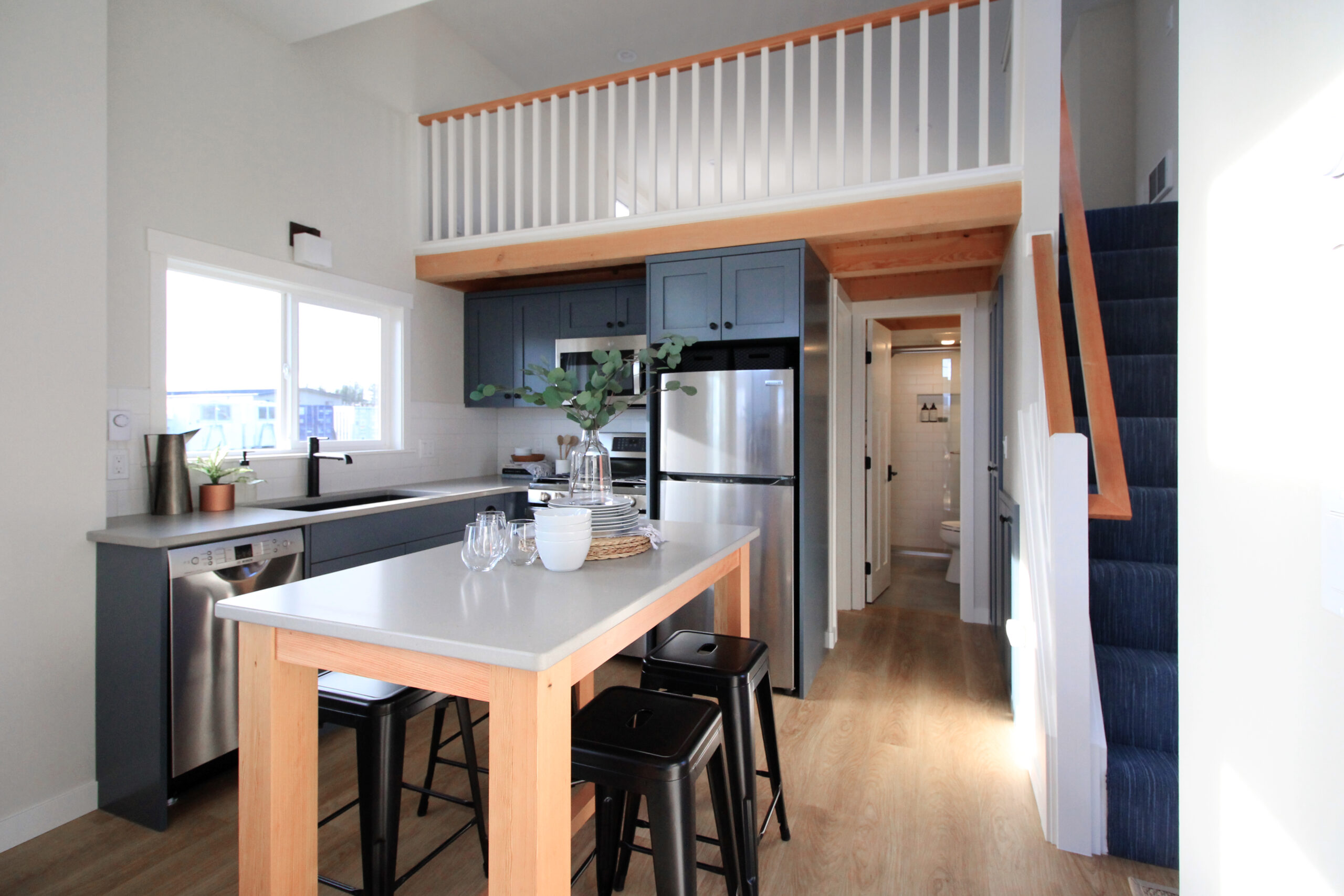
#2 Space Efficiency and Layout
In a tiny home kitchen, space efficiency is a game-changer. Every inch counts, so make use of tall cabinets and floating shelves to keep countertops clear and organized. A galley layout or L-shaped design creates a smooth flow without cramping the space.
A smart layout keeps your kitchen functional. Incorporate fold-down counters, pull-out shelves, or a rolling cart to add work surfaces when needed, then tuck them away when you’re done.
Think vertical to maximize storage and minimize clutter. Wall-mounted racks and hooks can hold utensils, pots, and even spices, freeing up precious drawer space.
With the right design, even a tiny house kitchen can feel spacious and efficient, making it easier to cook, clean, and enjoy your space.
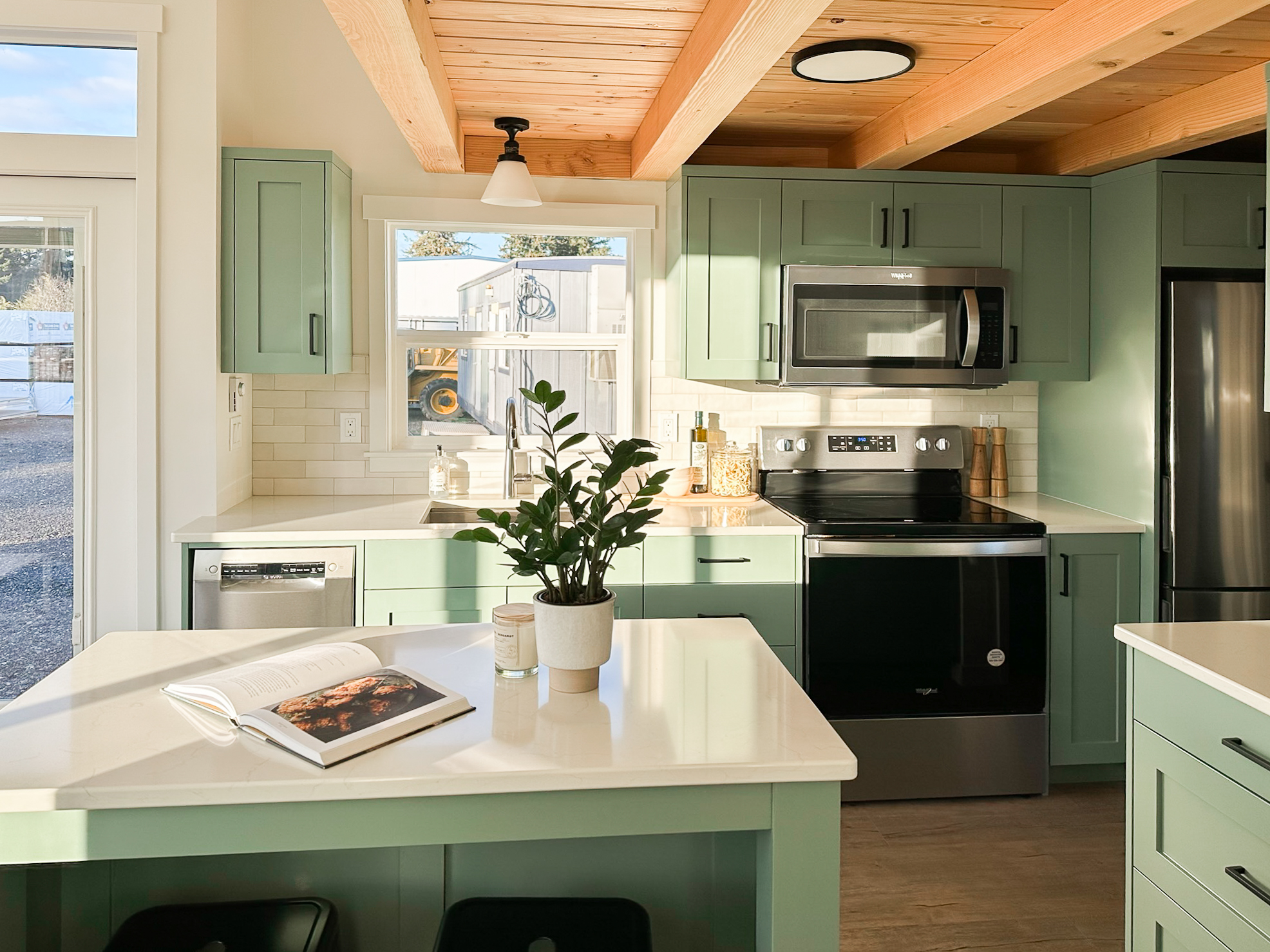
#3 Durability and Materials
When designing a tiny home kitchen, durability should be your top priority. Small spaces endure a lot of wear and tear, so choosing materials that can handle daily use is essential for keeping your kitchen functional and looking great over time.
In a tiny house kitchen, you’re up against constant moisture, heat, and grease. That’s why moisture-resistant materials are a must. Waterproof plywood for cabinets, vinyl plank flooring, and quartz countertops are all excellent choices These materials not only withstand the rigors of daily cooking but also maintain their beauty, even after years of use.
When it comes to cleaning and maintenance, look for low-maintenance materials that make your life easier. Scratch-resistant countertops and stain-resistant backsplashes are perfect for busy kitchens. Materials like polished concrete or quartz are not only easy to clean but also help you spend less time scrubbing and more time cooking.
Investing in durable, high-quality materials means fewer replacements in the long run. You won’t need to constantly worry about worn-out surfaces or appliances, saving you both time and money. Plus, choosing lasting materials reduces the environmental impact of frequent renovations, making your tiny home kitchen as sustainable as it is stylish.
#4 Multifunctional Appliances
In a tiny home kitchen, multifunctional appliances are essential. With limited space, you need appliances that do more than one job. Look for combo oven-microwave units, induction cooktops, and all-in-one refrigerators that offer full functionality while saving precious space.
A moveable storage island is another smart addition. It provides extra prep space, doubles as a dining area, and can be easily rolled away when not in use. This flexibility lets you maximize your kitchen’s potential without cluttering up the floor.
Efficiency is key in small kitchens. Choose appliances that combine multiple features, like a dishwasher drawer that also serves as a drying rack, or a built-in coffee maker that frees up valuable counter space. These clever designs make cooking and cleaning faster and easier.
For added versatility, go for appliances like a range hood with a built-in fan or a double oven with a warming drawer. They streamline tasks, saving both space and time in the kitchen.
Ultimately, multifunctional appliances transform your tiny kitchen into a space that’s both efficient and adaptable, helping you cook, entertain, and stay organized.
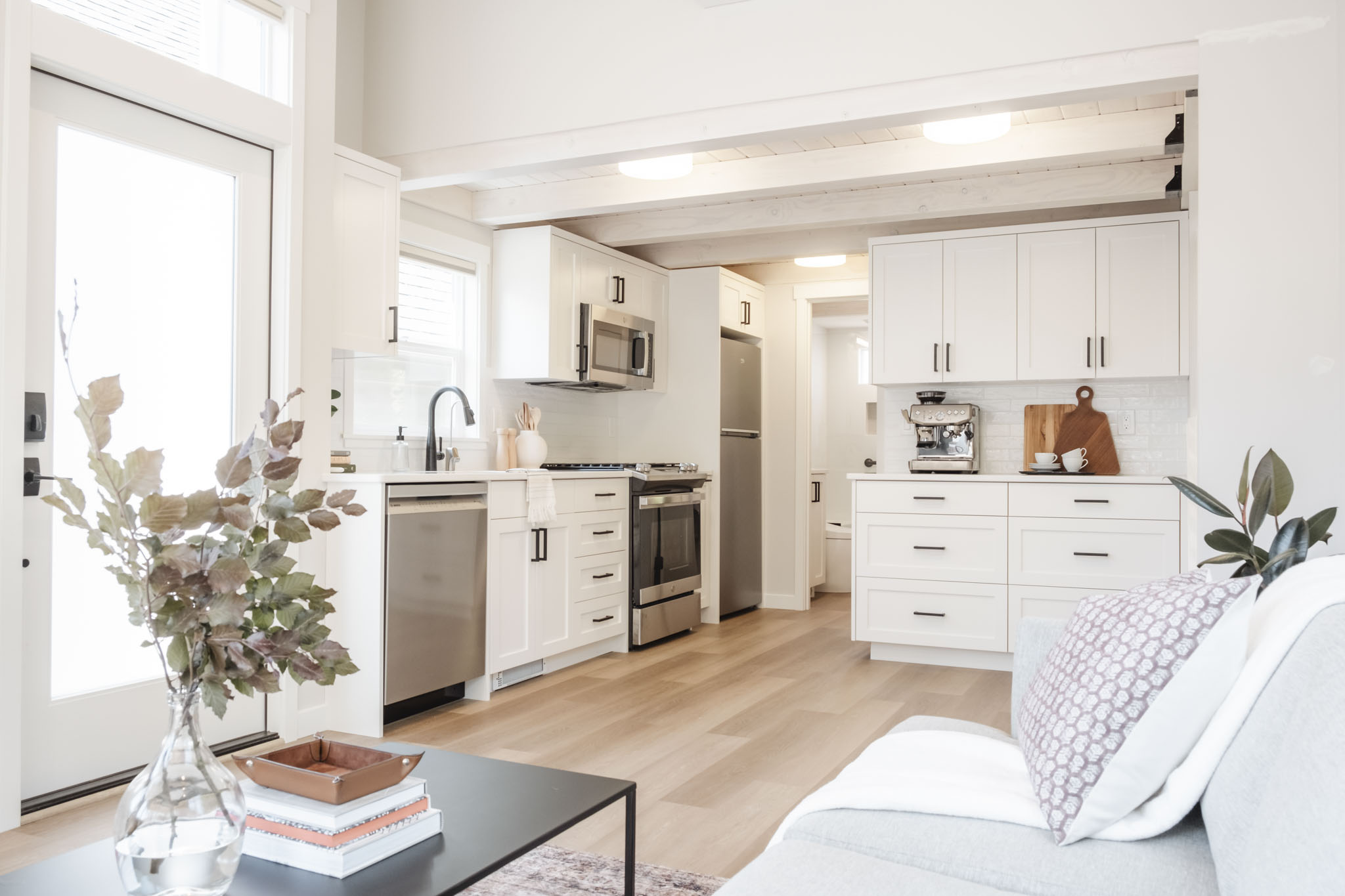
#5 Storage Solutions
When designing a tiny home kitchen, clever storage solutions are essential. To keep your space organized and functional, maximize every inch with:
- Tall cabinets for vertical storage
- Open shelving for easy access to everyday items
- Wall-mounted racks for pots, pans, and utensils
Hidden storage is key to making your kitchen feel more spacious. Consider these space-saving ideas:
- Pull-out pantry shelves
- Under-cabinet drawers
- Fold-down countertops
To maintain organization, use simple tools:
- Cabinet dividers
- Stackable bins
- Over-the-door organizers
These storage solutions will help you keep your tiny kitchen organized, efficient, and clutter-free.
Conclusion:
Designing a tiny home, park model or ADU kitchen is all about smart choices—making the most of every inch while ensuring your space remains functional, efficient, and stylish. By focusing on storage solutions, multifunctional appliances, and durable materials, you can create a kitchen that not only meets your daily needs but feels spacious and welcoming. With the right lighting, ventilation, and thoughtful layout, your tiny kitchen can be both a practical cooking hub and a cozy gathering space. Embrace these design tips to transform your tiny home kitchen into a space that truly feels like your own.


